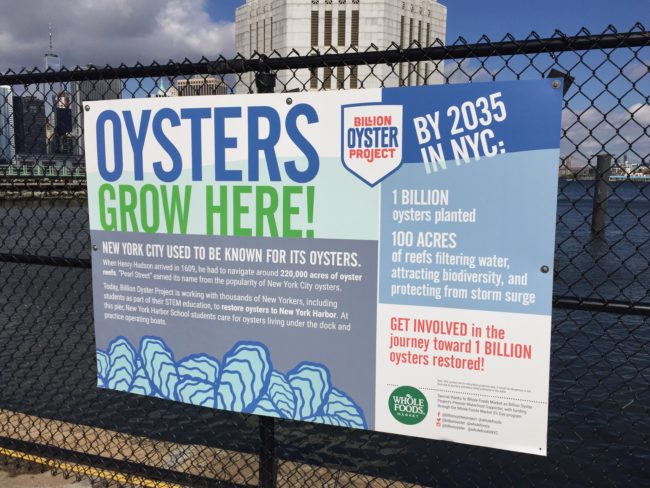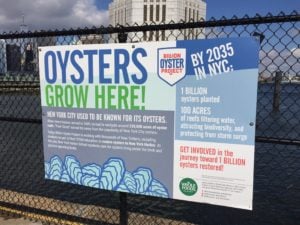Stopping polluters, boosting restoration

View more images on our Flickr site
Riverkeeper case yields funding for Billion Oyster Project research along the Harlem River.
Our legal actions stop industrial stormwater pollution and boost restoration efforts, yielding cleaner waterways and stronger local partnerships.
In 2018, we continued to call out industrial facilities operating in violation of the Clean Water Act and forced them to obtain permits and adopt best practices. With outside counsel, we completed seven such cases over the course of the year, cutting stormwater pollution and generating nearly $84,000 in fees and environmental benefits.
One case was a Clean Water Act “citizen action” to stop industrial water pollution at a shipping and trucking facility in New York City. In a settlement, the defendant agreed to an environmental benefit payment – $10,000 – to help compensate for damage done to the Harlem River. We’re proud to report that we were able to direct these funds to Billion Oyster Project, which put the resources to work expanding oyster research along the Harlem River – a project that involves New York City school teachers, community scientists and local organizations.
 BOP’s mission is to restore oyster reefs – which help filter and clean the water – to New York Harbor through public education initiatives, including oyster research stations that are actively monitored by members of the community. With help from the settlement funding, the number of research stations along the Harlem River was expanded. The funding also supported research and planning with partners like Randall’s Island Park Alliance, Urban Parks Rangers, New York Restoration Project, Row New York, Friends of Inwood Hill Park, Inwood Canoe Club and Inwood Indivisible Environment Committee.
BOP’s mission is to restore oyster reefs – which help filter and clean the water – to New York Harbor through public education initiatives, including oyster research stations that are actively monitored by members of the community. With help from the settlement funding, the number of research stations along the Harlem River was expanded. The funding also supported research and planning with partners like Randall’s Island Park Alliance, Urban Parks Rangers, New York Restoration Project, Row New York, Friends of Inwood Hill Park, Inwood Canoe Club and Inwood Indivisible Environment Committee.
Riverkeeper is very proud to support this work and other similar projects throughout the Hudson Valley as part of our efforts to restore health to New York Harbor and the entire Hudson River Estuary.
Please consider supporting our legal work by becoming a Riverkeeper member and signing up for email updates.
More information
Read our two community-driven Vision plans, detailing 135 opportunities for restoration on New York City’s waterways:
